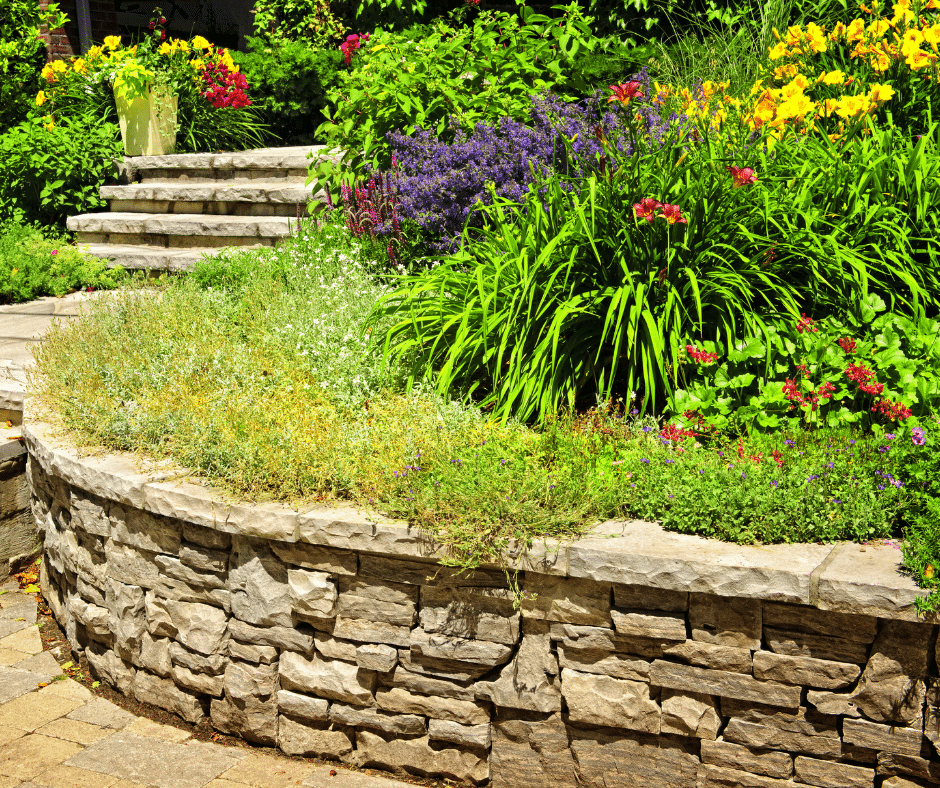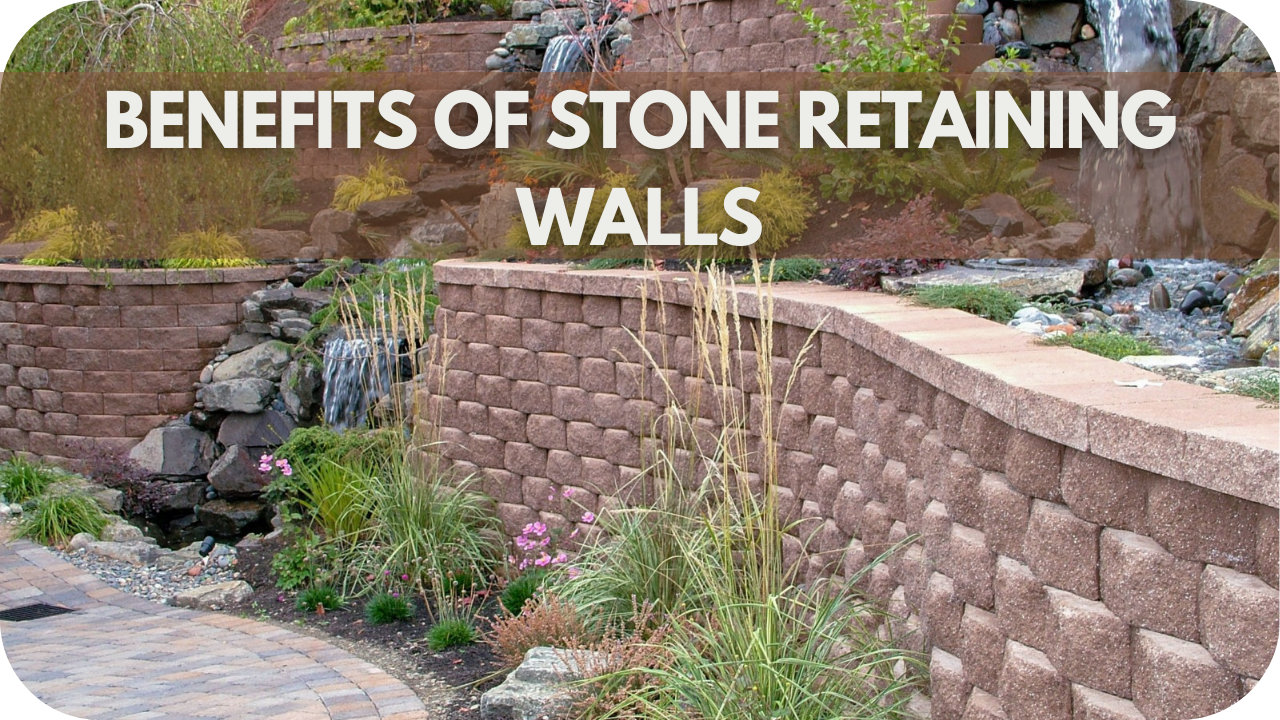Trick Factors To Consider for Building Efficient Retaining Walls in Your Backyard
When you're taking into consideration constructing a retaining wall in your yard, it's crucial to consider a number of key variables. The wall surface's objective, the materials you'll make use of, and the particular soil problems can all influence its efficiency and durability. You'll additionally need to navigate regional structure codes and plan for correct water drainage. However exactly how do you assure your design not just fulfills these demands yet also improves your landscape? Let's check out the essential steps with each other.
Recognizing the Function of Your Retaining Wall
When you consider constructing a preserving wall, consider its primary purpose: maintaining dirt and preventing disintegration. Retaining walls give crucial support for sloped landscapes, assisting to maintain dirt stability. You'll discover they're essential in locations where water drainage could otherwise wash away soil, leading to costly repair work and landscape damages.
By holding back earth, these walls create level surface areas for yards, patio areas, or paths. This not just boosts your lawn's looks but additionally advertises far better drain, lowering water pooling in undesirable areas. If you're taking care of high inclines, a sound retaining wall surface can stop landslides, ensuring safety for you and your residential property.
Ultimately, understanding the purpose of your retaining wall will direct your style choices and aid you develop a practical, long lasting framework that meets your needs. Take a moment to examine your landscape; it'll pay off in the lengthy run.
Selecting the Right Materials
When selecting products for your retaining wall surface, you'll want to take into consideration resilience, visual appeals, and price. Each element plays a necessary function in guaranteeing your wall stands the examination of time while looking great and suitable your budget. Let's check out just how to make the most effective selections for your task.
Product Durability Variables
Selecting the right materials is important for the durability and effectiveness of your retaining wall, given that their durability directly influences the wall's capability to stand up to environmental stresses. Start by considering your local climate; products like concrete and stone resist moisture and temperature variations well. If you reside in an area vulnerable to heavy rains, choose products with excellent drainage buildings, like gravel or permeable blocks, to stop water build-up.
Some products do better in specific soil types, so it's important to match them appropriately. Choosing durable materials guarantees your retaining wall stands solid, protecting your backyard for years to come.
Visual Style Choices
Durable products not only guarantee your retaining wall surface's structural stability yet also play a crucial function in its aesthetic allure. Don't neglect regarding the wall surface's form-- bent walls can create a softer look, while straight lines can really feel a lot more structured. By carefully choosing materials that line up with your visual vision, you'll improve your exterior space while guaranteeing your wall stands strong versus the components.
Cost-Effectiveness Analysis
Choosing the best products for your retaining wall surface isn't simply regarding aesthetic appeals; it's also vital for your spending plan. When picking materials, think about both in advance costs and lasting sturdiness. For instance, concrete blocks could be more expensive at first, however their longevity can conserve you cash on repair services. On the various other hand, hardwood can be extra budget friendly however may require replacement quicker.
Do not forget to factor in maintenance prices. Some products, like natural rock, can include appeal and require less maintenance, while others might need regular treatments
Ultimately, consider the advantages and disadvantages of each alternative versus your budget plan and the wall's desired function. Spending intelligently in materials currently can avoid expensive issues down the roadway. Choose materials that balance price and efficiency properly.
Examining Soil Problems and Water Drainage
As you begin your project, assessing soil problems and drain is necessary for the success of your retaining wall surface. Sandy soil drains pipes well however lacks security, while clay soil can keep wetness, leading to press on your wall.
Next, assess the slope of your lawn. If water naturally moves towards your wall surface, you'll require to execute a drainage remedy to avoid erosion and stress build-up. This Site Consider mounting perforated pipes or gravel backfill behind the wall to facilitate drainage.
Lastly, observe any neighboring trees or vegetation; their roots can impact soil stability. By recognizing your soil problems and executing proper water drainage, click site you'll create a strong foundation for your retaining wall that stands the examination of time.
Following Local Building Regulations
Before you begin constructing your retaining wall surface, you need to study local policies to guarantee compliance. It's important to comprehend what permits you must obtain, as this can save you from costly fines or having to renovate your work. Taking these steps seriously will aid you build a secure and effective structure.
Research Study Local Regulations
Comprehending regional regulations is necessary when planning your retaining wall task, particularly given that constructing codes can differ significantly by area. Look for guidelines on wall surface elevation, products, drainage systems, and structural stability. By doing your study upfront, you can assure your retaining wall surface meets all essential codes and blends seamlessly right into your yard.
Get Required Licenses
As soon as you've researched neighborhood laws, the following step is to acquire the needed authorizations for your retaining wall task. They may call for specific strategies or engineering evaluations, especially for bigger walls. Securing the best authorizations can conserve you from pricey penalties or having to dismantle your wall later on.

Planning the Design and Visual Appeal
As you commence preparing the design and visual appeals of your retaining wall surface, take into consideration exactly how it will integrate with the surrounding landscape. Think of the materials you'll make use of-- stone, brick, or concrete-- and just how they'll match your home's architecture and the natural environments in your backyard. Pick colors and textures that blend seamlessly with existing features like patios, pathways, or gardens.
Next, visualize the wall surface's shape and elevation. Rounded walls can soften a rigid landscape, while straight lines might communicate a much more modern-day appearance. Don't fail to remember to integrate plants and greenery around the wall surface for a natural touch; this can improve its allure and integrate it right into the setting.
Lastly, keep in mind functionality. Your design needs to not just be aesthetically pleasing yet likewise offer its function properly. By thoughtfully preparing these elements, you'll create a keeping wall that enhances your yard's elegance while satisfying its structural role.
Determining Elevation and Density Needs
To build a strong retaining wall surface, you require to precisely determine its elevation and thickness requirements based upon the soil problems and the height of the slope it will sustain. Start by examining the incline's angle and the sort of soil, as various soils apply differing quantities of pressure.
For walls over 4 feet high, think about a try this out thickness of at the very least 12 inches. If the wall surface is taller, boost the thickness proportionally to maintain security.
Following, compute the elevation of the wall by determining the upright range it requires to preserve. For every foot of height, you ought to commonly plan for a density of one-third of the wall surface's elevation.
Constantly remember to account for additional factors like drainage and backfill, which can influence your wall surface's design. Appropriate estimations currently ensure your retaining wall stands solid and lasts for several years to find.
Maintenance and Durability Considerations
While preserving your retaining wall surface could feel like a low top priority, overlooking it can cause significant problems gradually. Routine inspections are important; check for cracks, bulges, or any kind of indications of water damages. Attending to these issues early can save you from expensive fixings in the future.
Watch on drain systems, also. Blocked drains pipes can create water to accumulate, exerting stress on your wall surface and jeopardizing its stability. Clear particles and assurance proper circulation to preserve longevity.
You might likewise wish to assess sealing your wall to shield it from dampness and weathering. Relying on the material, this could need reapplication every couple of years.
Finally, landscaping around your wall surface can support its honesty. Stay clear of growing huge trees close by, as their roots can weaken the foundation. With aggressive maintenance, your retaining wall surface can serve you well for years ahead.

Often Asked Inquiries
Can I Build a Retaining Wall by Myself, or Should I Work with an Expert?
You can definitely develop a preserving wall on your own if you have the right devices and knowledge. Hiring an expert warranties it's done correctly, particularly for bigger or even more intricate structures. Consider your skill degree prior to deciding.
What Are one of the most Typical Errors Made When Structure Retaining Walls?
When constructing retaining walls, you might neglect appropriate drain, miss making use of the ideal products, or neglect support. These usual blunders can lead to structural failure, so take your time and plan carefully to stay clear of problems.
Exactly how Do I Know if My Retaining Wall Demands Support?
You'll understand your retaining wall surface needs reinforcement if you discover fractures, leaning, or bulging. Examine for water merging behind it or dirt erosion near the base. Address these signs quickly to avoid additional damages.
What Plant kingdom Are Appropriate for Landscaping Around a Retaining Wall?
When landscaping around a keeping wall surface, think about utilizing low-maintenance plants like succulents, ornamental turfs, or sneaking ground covers - OKC Precision Retaining Walls. They'll flourish in those conditions and include elegance while avoiding soil disintegration around your wall surface
Just How Can I Avoid Erosion Around My Retaining Wall?
To prevent erosion around your retaining wall, you can plant ground cover, usage compost, and install drainage systems. Frequently look for water buildup and change landscaping to redirect drainage away from the wall.
Comments on “OKC Precision Retaining Walls: Functional beauty for Oklahoma landscapes”